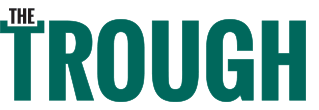
The following is an exert from a September 2021 interview in Manure Manager. For the full interview, click here.
Gleise M. Silva grew up in Recife, a picturesque city in northern Brazil that is home to lush rainforests, historic architecture and some of the most prized beaches in the world. While she savored the splendors of her birthplace, her real interest was animals: specifically, beef cattle. That interest led her to study animal sciences in her native country before travelling to the U.S. for an undergraduate internship at the University of Florida. She subsequently completed her PhD at the school’s North Florida Research and Education Centre where she specialized in beef cattle nutrition.
In 2021 she was hired by the University of Alberta as its first Beef Cattle Research Council (BCRC)-Hays chair in beef production systems. In her role, Silva conducts research into cow-calf production with her U of A colleagues and turn their findings into practical advice for beef producers.
Interview has been edited for clarity and length.
Manure Manager: Part of your role with the BCRC is to help beef producers save money. Can you explain how your work will help with that?
Silva: That can be achieved many different ways. For example, it can be by increasing the efficiency of cattle by having animals consume less. It can be by making sure the beef cow is calving every year which saves farmers in terms of labour and fuel on their field. There are a couple of ways to achieve this goal and to improve the economics of this sector. We want to find better ways or more efficient ways to produce cattle that will translate into more profit for the beef producers.
MM: You’ve only been here a short time, but have you noticed anything unique about Alberta or Canadian cattle or cattle operations compared to the ones you studied in Brazil and the U.S.?
Silva: I think the biggest difference that I have noticed so far is the Canadian winter. It is maybe the biggest challenge here and it is unique compared to other parts of the world. The forage growth season is usually shorter than any other places in the world. We need to guarantee good forage production during the growing season and then store those forages for the months to come.
MM: When it comes to cattle production here in Canada a case is often made that you can be economically profitable or sustainable, but not both. How can cattle producers here maintain profitability while also being sustainable?
Silva: When we think of sustainability we have to remember exactly what it involves. Sustainability involves the environment, the social well-being of the farm family and the economics of the activity.
When we preserve natural resources, the grasslands, we are talking about sustainability. When we reduce calving intervals, when we reduce the stress on the land, when we reduce disease incidence we can improve profitability and the quality of life for the beef producer. It’s all aligned. One of the examples I like to use is when we have a cow that is giving a calf every 18 months instead of 12-month intervals we have to feed this new cow for longer without her being productive. That means we are losing feed, labor, space [and] general resources. But when we find the right management for our operation and can increase production we minimize waste, and we improve in gains.
When we select animals that are more efficient, and we give them adequate management, we reduce emissions and improve the performance of the farm. So that is all linked to sustainability and that is something we really have to think about. When we improve efficiency on our farm we are also more sustainable because we are reducing what we use, and we are reducing the waste we produce. •
Print this page